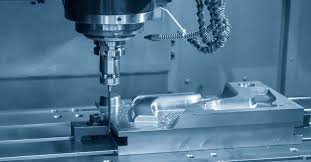Computer Numerical Control (CNC) machining has revolutionized the manufacturing industry by providing precision, speed, and cost-efficiency. Among the different CNC services, Low-Volume CNC Machining and Rapid CNC Prototyping stand out as essential solutions for businesses that need flexibility, accuracy, and fast turnaround. These services cater to startups, engineers, product designers, and industries aiming to validate designs before mass production.
This guide explores the benefits, processes, and applications of both low-volume CNC machining and rapid CNC prototyping to help businesses make smarter production decisions.
What is Low Volume CNC Machining
Low-Volume CNC Machining refers to producing a small batch of precision parts, typically ranging from 10 to a few thousand units. Unlike traditional mass production, this method focuses on flexibility, cost reduction, and faster lead times.
Benefits of Low Volume CNC Machining
- Cost Efficiency – Producing only the required number of units eliminates unnecessary inventory and reduces upfront investment.
- Flexibility – Ideal for businesses testing different versions of a product or serving niche markets.
- Faster Market Entry – Smaller batches allow quicker testing and product launches.
- Customization Options – Parts can be tailored to meet unique customer requirements.
- Reduced Risk – Companies can evaluate the product’s performance before committing to full-scale manufacturing.
Industries Using Low Volume CNC Machining
- Aerospace – For specialized parts that require tight tolerances.
- Medical Devices – For custom implants and surgical instruments.
- Electronics – For small-batch enclosures and mechanical parts.
- Automotive – For prototype car components and low-demand spare parts.
What is Rapid CNC Prototyping
Rapid CNC Prototyping is the process of quickly creating functional prototypes using CNC machines. It allows businesses to validate designs, test functionality, and identify improvements before large-scale manufacturing.
Advantages of Rapid CNC Prototyping
- Speed – Engineers can receive prototypes within days, accelerating the design cycle.
- Accuracy – CNC machines provide precise cuts and dimensions, ensuring prototypes are close to final products.
- Material Versatility – Works with metals, plastics, and composites, giving realistic performance testing.
- Cost Savings – Early detection of design flaws reduces costly errors in mass production.
- Design Validation – Prototypes can be used for mechanical testing, customer presentations, and investor pitches.
Comparing Low Volume CNC Machining and Rapid CNC Prototyping
While both services complement each other, they serve different purposes in the product lifecycle.
- Low-Volume CNC Machining focuses on producing small batches for end-use or limited market release.
- Rapid CNC Prototyping is centered on creating prototypes for design validation and testing.
Businesses often start with rapid CNC prototyping to refine designs and then transition into low-volume CNC machining for short production runs.
Why Choose CNC Machining Over Other Manufacturing Methods
CNC machining stands out compared to 3D printing, injection molding, and other traditional methods.
- Higher Precision – CNC machining delivers tighter tolerances.
- Better Surface Finish – Machined parts often require minimal post-processing.
- Material Variety – Works with metals like aluminum, steel, titanium, and plastics like ABS and POM.
- Scalability – From a single prototype to thousands of units, CNC machining can adapt.
Applications of Low Volume CNC Machining and Rapid CNC Prototyping
- Product Development – Create and refine prototypes before mass production.
- Market Testing – Release limited units to gauge customer response.
- Custom Parts – Manufacture unique or replacement parts on demand.
- Innovation Acceleration – Quickly iterate designs and launch new products.
Choosing the Right CNC Service Provider
When selecting a CNC machining partner, consider the following:
- Experience and Expertise – Providers with a strong track record deliver higher quality.
- Material Capabilities – Ensure they can work with the materials your project requires.
- Lead Times – Fast turnaround is crucial for prototypes and short runs.
- Quality Assurance – Look for providers offering tight tolerance and inspection reports.
- Cost Transparency – Choose a company that provides clear and competitive pricing.
Conclusion
Low-Volume CNC Machining and Rapid CNC Prototyping are game-changing solutions for businesses aiming to stay competitive in today’s fast-paced manufacturing environment. Whether you are testing a new product, fulfilling small orders, or customizing parts, these services provide the flexibility, cost-effectiveness, and precision needed for success.


